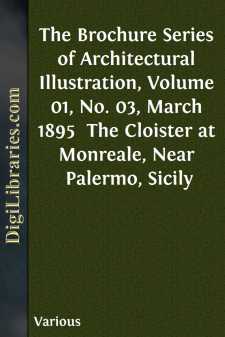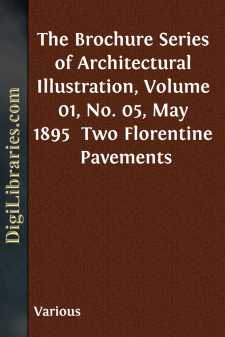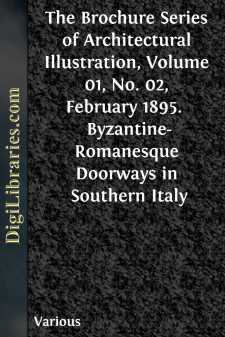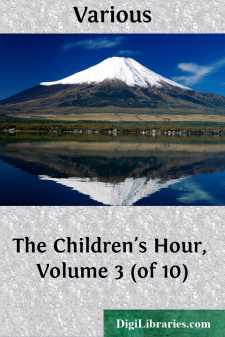Categories
- Antiques & Collectibles 13
- Architecture 36
- Art 48
- Bibles 22
- Biography & Autobiography 813
- Body, Mind & Spirit 142
- Business & Economics 28
- Children's Books 17
- Children's Fiction 14
- Computers 4
- Cooking 94
- Crafts & Hobbies 4
- Drama 346
- Education 46
- Family & Relationships 57
- Fiction 11829
- Games 19
- Gardening 17
- Health & Fitness 34
- History 1377
- House & Home 1
- Humor 147
- Juvenile Fiction 1873
- Juvenile Nonfiction 202
- Language Arts & Disciplines 88
- Law 16
- Literary Collections 686
- Literary Criticism 179
- Mathematics 13
- Medical 41
- Music 40
- Nature 179
- Non-Classifiable 1768
- Performing Arts 7
- Periodicals 1453
- Philosophy 64
- Photography 2
- Poetry 896
- Political Science 203
- Psychology 42
- Reference 154
- Religion 513
- Science 126
- Self-Help 84
- Social Science 81
- Sports & Recreation 34
- Study Aids 3
- Technology & Engineering 59
- Transportation 23
- Travel 463
- True Crime 29
Sort by:
by:
Various
THE CLOISTER AT MONREALE, NEAR PALERMO, SICILY. The island of Sicily, being in form nearly an equilateral triangle, with one side facing towards Italy, another towards Greece, and the third, towards Africa, was a tempting field for conquest to the various nations surrounding it. It was successively overrun by the Greeks, Carthaginians, and Romans, and later, after the Christian era, again successively...
more...
by:
Various
TWO FLORENTINE PAVEMENTS. The church of San Miniato al Monte, just outside the walls southeast of Florence, and the Baptistery, or church of San Giovanni Battista, in Florence, are among the finest examples of the Tuscan Romanesque style, and both probably date from about the same time—the early part of the twelfth century—although the date of San Miniato has until recently been referred several...
more...
by:
Various
ITALIAN WROUGHT IRON. The wrought iron of the middle ages, and of the time of the Renaissance, and even down to the last century, in Italy, France, and Germany showed, in the crudest examples, the principal virtues of all true decorative art. The reason is not far to seek. The difficulties in the way of working the material with ease imposed certain limitations in design and execution which could not...
more...
by:
Various
THE COUNTRY HOUSES OF NORMANDY. THE houses chosen for illustration in this number are of different types, of different dates, built for men of different stations in life, and are constructed of different materials. They are, however, all in the province of Normandy, in northern France, and they are all situated outside the towns; further than this it may not be well to go in attempting to classify them...
more...
by:
Various
BYZANTINE-ROMANESQUE DOORWAYS IN SOUTHERN ITALY. The illustrations chosen for this issue are all from the Byzantine Romanesque work in the province of Apulia, that portion of Southern Italy familiar in school-boy memory as the heel of the boot. Writers upon architecture have found it difficult to strictly classify the buildings of this neighborhood, as in fact is the case with most of the medieval...
more...
by:
Various
INTRODUCTORY This book, as its title-page states, is made up of selections from the writings of California authors. Most of the selections refer to California—her scenic glories, mountains, valleys, skies, canyons, Yosemites, islands, foothills, plains, deserts, shoreline; her climatic charms, her flora and fauna, her varied population, her marvellous progress, her wonderful achievements, her diverse...
more...
by:
Various
TO THE CHILDREN The greater part of this book is made up of stories from the poems of Homer and Virgil. Homer is thought to have lived in Greece about three thousand years ago, and yet his poems never seem old-fashioned and people do not tire of reading them. Boys and girls almost always like them, because they are so full of stories. If you want to read about giants or mermaids or shipwrecks or...
more...
by:
Various
IS THE SINNER A MORAL AGENT IN HIS CONVERSION? There are a great many questions asked upon the subject of conversion, and as many answers given as there are theories of religion, and many persons listening to men's theories upon this subject are left in doubt and darkness in reference to what is and is not conversion. You ask the Mormons, who fully believe their theory of conversion, and they will...
more...
by:
Various
THE CONFLICT. The pyramids, temples and palaces of Thebes are monuments of the ancient intellects of our race. Great thinkers only were capable of giving to the world the Vedas, the Apollo Belvidere and the Parthenon. The arts and astronomy of Egypt harmonize very poorly with the idea that modern scientists have all the wisdom and intelligence known in the history of the ages. Among the wonderful...
more...
by:
Various
LAW AND ATONEMENT. "The soul that sinneth it shall die," and it "shall not die." The first quotation, "The soul that sinneth it shall die," is often produced in support of the scholastic idea that the law of God was inexorable, that is absolute or unconditional, not to be moved or its penalty escaped by reformation or petition. The language of the text is very definite, and,...
more...











